I must confess that until a few weeks ago Borde Hill hadn’t featured on my garden visiting radar. But having visited the garden recently, as guests of Eleni Stephenson Clarke and her husband, Andrew John, I’m pleased to say it now very firmly is. What a special place indeed! The couple has worked hard to put Borde Hill on the map, as one of the finest gardens and must-see destinations in West Sussex. Borde Hill lies just outside of Cuckfield in West Sussex. Splendid in every season, the gardens that surround the private residence are set in 200 acres of listed parkland and woodland.
The plants mainly originate from the Himalayas, China, and the Andes, and date back to the 1900’s. In amongst the acres of land are some of the finest collections of shrubs and trees in England, making Borde Hill one of the most stunning gardens in South East England.
If you love visiting gardens like me and Gary, then Borde Hill is a must. So here’s a review and summary of our day visiting the formal gardens that surround the property.
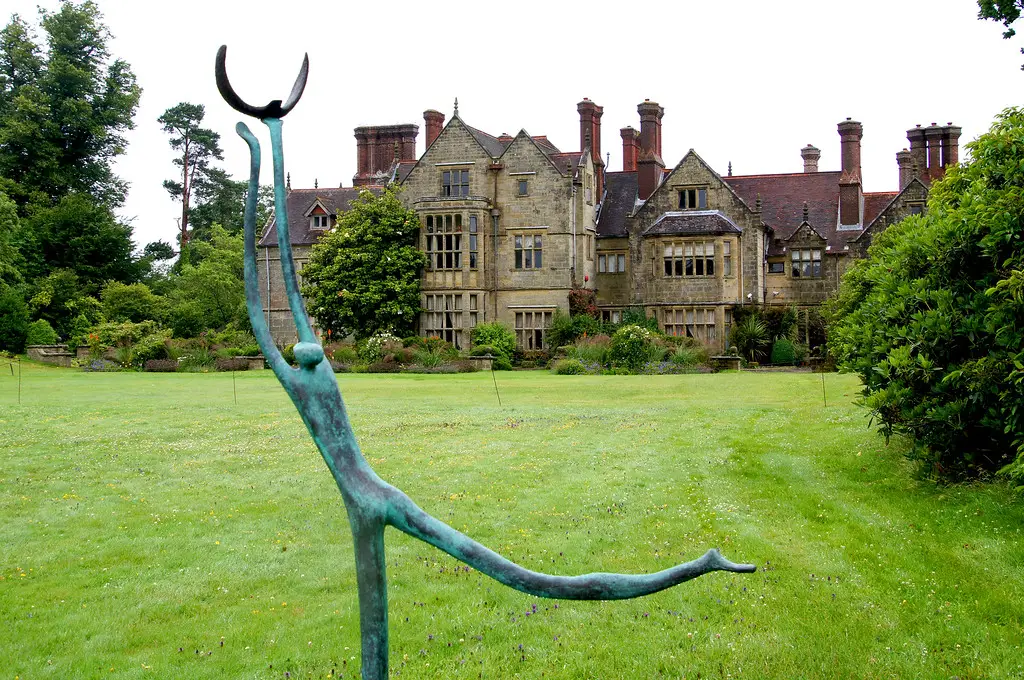
HISTORY OF BORDE HILL GARDENS
Borde Hill is one of our great heritage gardens, dating from the late 19th century. The Elizabethan Tudor mansion which lies at the heart of the estate, was built in 1598, and has, for the last four generations been inhabited by the Clarke family. But the gardens that surrounded were established a little later, by the current owner’s great grandfather.
Colonel Stephenson R. Clarke was an avid collector of all things foreign. A keen naturalist, with a double first-class degree in zoology, the Colonel tackled his garden meticulously, writing notes and cataloguing his plants.
The construction of a railway line in this part of the country, encouraged many wealthy Victorians to build their weekend country estates in the area. At the same time an active Royal Horticultural Society and writers such as Gertrude Jekyll and William Robinson inspired the same Victorians to create a wealth of beautiful gardens. As well as at Borde Hill, large plant collections sprung up nearby at Nymans, Leonardslee, the High Beeches and Wakehurst Place.
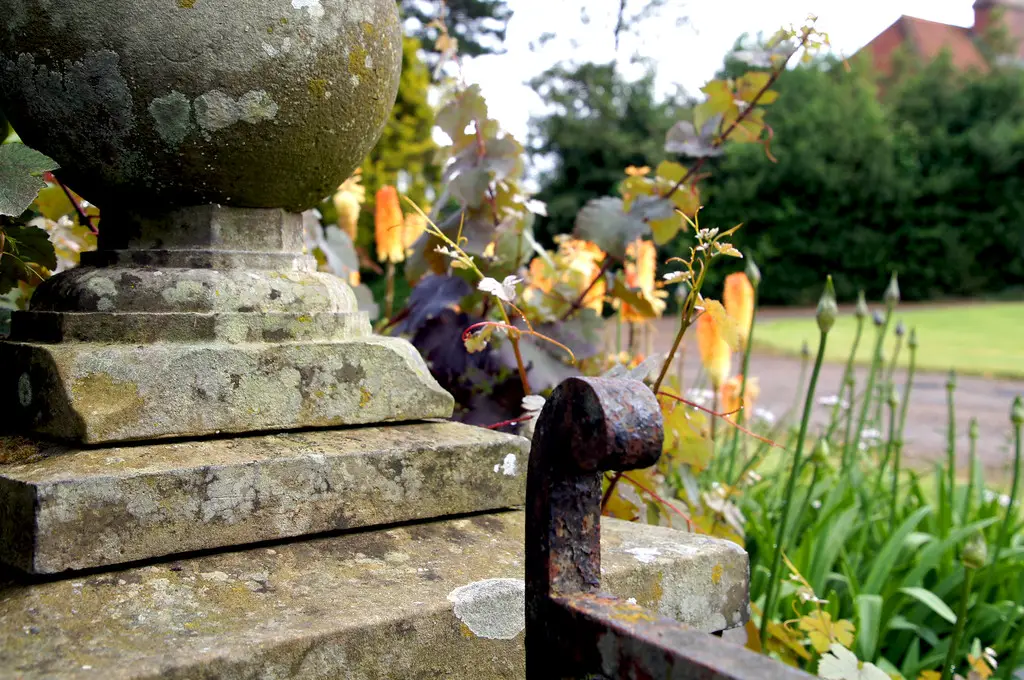
Between 1893 and 1937 Colonel Stephenson R. Clarke sponsored many of the Great Plant Collectors’ expeditions. The likes of Ernest Wilson, George Forrest, Reginald Farrer and Frank Kingdon Ward were despatched to bring back as many wild treasures as they could muster. They returned from their travels to the Himalayas, China, Burma, Tasmania and the Andes with rare specimens of rhododendrons, azaleas, camellias and exotic trees. The fertile loam, clay and good frost make Borde Hill the perfect location for an exotic garden.
Many of these plant species are still at the heart of the collection which make up the seventeen acres of formal gardens we enjoy today. And until recently the emphasis was largely on woody plants and in particular the rhododendron collection. His efforts are reflected in the large number of Champion Trees at Borde Hill – one of the largest private collections surviving in the UK – with more than 70 specimens. But all this changed when the current owners moved in.
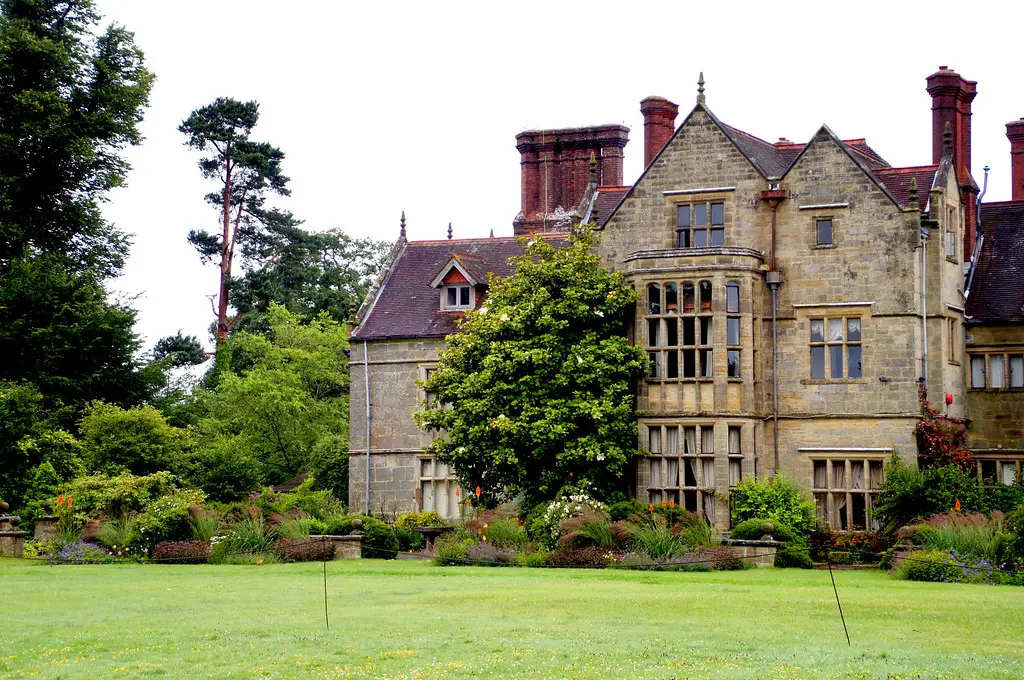
In 1987, the Great Storm of October smashed through the estate. The ridges of Sussex’s High Weald were among some of the worst hit areas. In the same year Andrewjohn Stephenson Clarke and his wife Eleni inherited the house and gardens.
Until then the garden was very much a spring garden, with most of the flowering finished by the beginning of June. Eleni and her husband Andrewjohn Stephenson Clarke started looking at how to extend the colour through the summer with roses and perennials, not in a very rigid way but with the same soft, Robinsonian feel you get in the woodland areas. Furthermore, a National Heritage Lottery Grant enabled them to restore features such as the greenhouse and ha-ha.
Brought up in Cyprus and with a degree in geology, Eleni (who showed us around Borde Hill) has embraced this garden project with gusto, even doing a horticulture course. She and Andrewjohn direct the garden with the help of a garden committee, whose members are appointed from various horticultural bodies including the RHS and Kew. Their fabulous team of gardeners includes the like of Andy Stevens, the Head Gardener, who is advised by their Garden Council with members such as Jim Gardiner and Stephen Lacey, and designers such as James Alexander Sinclair.
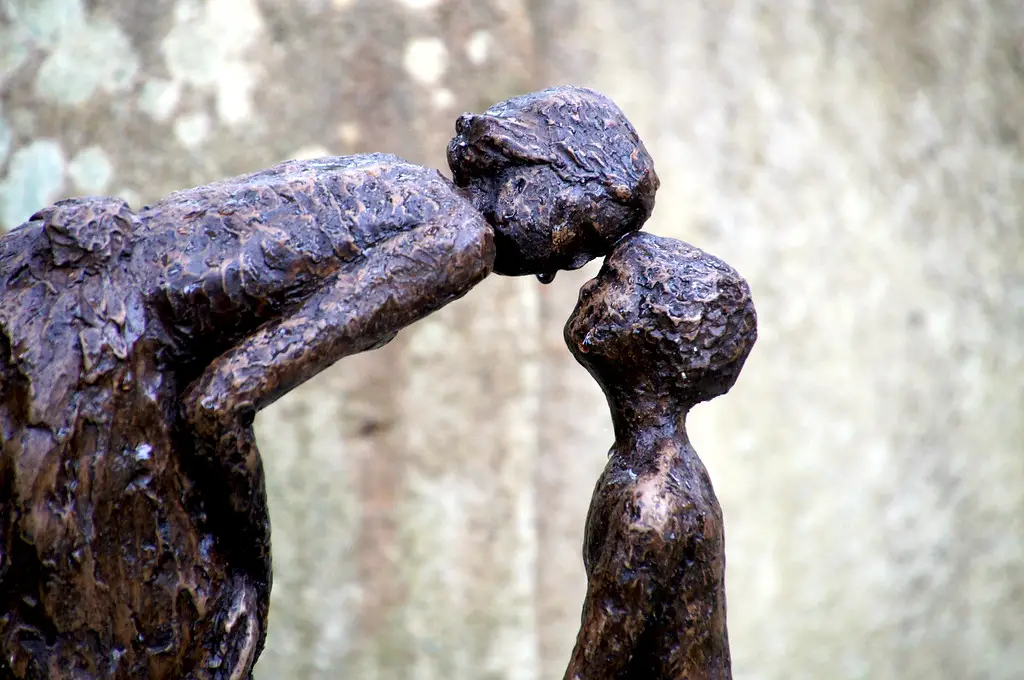
The Stephenson Clarke family have worked hard to turn this into a truly spectacular garden during the last twenty years and spent both time and money improving facilities at the property. They are keen not to let the garden stand still. Whilst both are aware of the garden’s history, it doesn’t stop them from changing things up once in a while. At the same time an extensive and ongoing programme of planting acknowledges the garden’s heritage.
Today, Borde Hill is listed as Grade II* importance by English Heritage on its register of Parks and Gardens. Its collection of trees and shrubs is one of the most comprehensive in the world.
LAYOUT OF BORDE HILL GARDENS
Overall Borde Hill Estate is 200 acres in size, so if you are a keen walker there are plenty of miles to cover.
At the heart of the estate the 17 acres of private gardens sprawl to the east and west of the house, separated by the wide expanse of the ‘South Lawn’, which is part of the residence.
The 17 acres of formal gardens are divided into a series of carefully-planned and interlinked outdoor ‘rooms’ each with unique style, ensuring there is something of interest to see at all the time. These formal gardens include among others the Azalea Ring, which was the first to be planted and comes alive with a rainbow of colour early in the visiting season, the Italian Garden, centred on a large pool with stunning views over the park, the Rose Garden planted with 700 David Austin roses and the sub-tropical dells. An eclectic mix of varying appeal, very much in the Victorian spirit.

The overall feel of the garden is slightly higgledy-piggledy, but delightfully so. It’s a garden that invites you to amble around, losing your way while exploring narrow paths and inviting steps, and with plenty of seating so you can pause and take in your new discovery.
It’s worth taking the time to explore all the paths, and secluded corners to find unusual gems, and different vistas. Indeed there are lovely views over the surrounding woodland and farmland, particularly as you walk along Paradise Walk at the base of the South Lawn between the east and west gardens. On a clear day it is even possible to see the Ouse Valley viaduct, far off in the distance.
The more naturalistic groupings thus benefit from some lovely undulating topography. Sometimes you are looking up at a knoll, bristling with grassy and strap-leaved plants like iris, hot-coloured crocosmias, yuccas, rich pink dieramas, and white-flowered libertia. At other times you are looking down on to a pool and lush dell of big-leaved cannas, hostas and ligularias, backed by gunnera and banana.

Stephenson R. Clarke was influenced hugely by the wild gardening approach advocated by William Robinson and was also an early pioneer of ‘right plant, right place’. He took great care in selecting sites on his estate which closely matched the conditions under which the plants and their seed were growing at the time of collection.
For the plants, this means they’ve often grown to their maximum potential. For the visitor, it can mean quite a walk to see everything as some of the choice specimens are spread over the 200-acre estate instead of being confined to the main garden area around the house.
Among the acres of land are some of the finest collections of shrubs and trees in England, making Borde Hill one of the most stunning gardens in the southeast. The vast area of woodland is great for taking long walks under the shade of the giant trees carpeted with bluebells. The garden has over 70 champion trees that are the tallest or largest girth in Britain, and during the autumn months, they transform into a spectrum of reds, oranges and golds.

With bird watching and an art gallery on site, there is plenty to occupy visitors of all ages. Or you can simply enjoy the countryside by soaking up nature at its best.
From a practical point of view, the main paths offer good access for wheelchairs and buggies and there is a large adventure playground (away from the gardens) so the little ones can burn off some energy. You can even take the dog, but please remember to keep it on a lead.
Eleni and Andrewjohn have recently replaced the former entrance hut with an impressive entrance and shop. There is also a cafe and a more upmarket restaurant on-site, should hunger strike.
Gary and I visited Borde Hill on a rainy day and thus settled for a more sedate amble round the formal gardens before sitting down for lunch at Café Elvira.
AZALEA RING
The Azalea Ring was one of the first areas to be planted by Colonel Stephenson R Clarke at the turn of the twentieth century.
Whilst being severely hit in the great storm of 1987, a number of unusual trees remain and this part of the garden is gorgeous all year round.
Visit the Azalea Ring in March to witness a magnificent display from the blooming Magnolia trees. In May the flowering Azaleas transform the garden into a stunning kaleidoscope of colour and scents. Whereas in autumn it is the leaves of the deciduous Azaleas that create a wonderful display of colour.
Most of the azaleas planted in this garden were selected from the famous Knaphill strain, bred by the two Antony Waterers, father, and son, over a 60 year period. The flowers are better formed and cleaner in colour than many of the more modern hybrids.

JAY ROBIN’S ROSE GARDEN
Gary and I started our visit of Borde Hill with the Jay Robin’s Rose Garden, named after the current Stephenson Clarke’s daughter.
Designed in 1995 by Chelsea Flower Show gold medallist Robin Williams and built the following year, the Rose Garden is based upon photographs of the original design from the early 1900s, which highlight the family’s passion for English roses.
Framed in box, lavender and catmint, the garden is ablaze with colour and beautifully scented. The wonderful collection of mainly David Austin Roses includes over 100 different types; everything from the ubiquitous shrub rose to hanging swags of ramblers and patterns of closely grouped miniature roses is represented.
Delphiniums, peonies, phlox and swags of clematis have additionally been planted to compliment the display of white, pink and crimson to creamy yellow display of roses, set out in a colour wheel.
A brick edged-pool and fountain proudly stands at the centre of the rose garden. Look closer and you will spot the lizard beneath the peacock.
The neat, paved paths make it easy to meander between the display of roses and get up close and personal with each flower.
The best time to visit the Rose Garden is in June when it is in full bloom. Special Rose Celebrations take place every year between the 15th and 30th of June. So enjoy a cream tea in the Rose Garden at Little Ritz Café, or even a rose-themed tea at Cafe Elvira, located within the Victorian stable blocks, or visit the shop for a selection of rose-themed gifts.

SCULPTURE EXHIBITION
Every year Borde Hill run a sculpture exhibition in late Summer. Now in its 18th year, the Sculpture Exhibition is a notable celebration of art and sculpture by both established and up and coming artists.
During the Exhibition, the garden and woodland is transformed into an outdoor gallery with unique life size sculptures made from bronze, resin, stone, metalwork, ceramics, steel clay, glass and cloth which have been created by 18 different sculptors

WHITE GARDEN

MEDITERRANEAN GARDEN
The Clarke family have always had a great passion for tropical and Mediterranean plants, so this part of the garden acknowledges the memories and influence of good times spent abroad.
I also loved the small metal statues that sat in every corner of the Mediterranean Garden, such as the leaping cat pictured below.
This formal garden uses the stone walls from what was once an outbuilding to protect the fragile plants from the harshest part of the British weather.

VICTORIAN GREENHOUSES
Originally a set of Victorian Greenhouses at the centre of the formal garden, the elegant glass buildings now lie in ruin. They have been beautifully planted up and look almost overgrown.
Back in the 19th century, these greenhouses formed the heart of the working garden. One of the main jobs of the twenty-seven gardeners, then working at Borde Hill, was to provide fruit and vegetables for the house as well as propagate material for the formal gardens. The Victorian Greenhouses were thus used to propagate plants either from cuttings or grown from seeds.

OLD ROSE GARDEN
A little further along lies a small plot. This area is currently planted with Standard Roses in the base of an old Victorian greenhouse. It houses a whole collection of delicate pink roses, drooping romantically across the path.
But the most striking feature of this formal garden is the smell. Wafts of rose essence pierce your nose. This is truly one of my favourite gardens in Borde Hill.
This small outside space is surrounded by a garden wall. At the back and centre of the plot stands a beautifully cast metal door.

OLD RHODODENDRON GARDEN
Some of the first rhododendrons brought to the UK by the great Victorian plant hunters were planted at Borde Hill and still continue to bloom, mainly in the old Rhododendron Garden.
Indeed it was one of Andrewjohn’s father’s main interest to build up the rhododendron collection
As we visited the garden in the summer however the Old Rhododendron Garden was just green and leafy. But I’m sure it is worth a return visit in the spring.

LITTLE RITZ
In the midst of the old Rhododendron garden, you will find a tea room called Little Ritz which is perfectly placed for a piece of cake and a cup of tea.
It has a lovely vintage theme to it and they also have an inside eating area (in a little Summer House) which would be wonderful for a baby shower, or girls get together.
All the cakes are homemade and they have a great selection, they also offer a wide range of sandwiches and lunch boxes for children. More details on all of the places to eat can be found on the website here.

MIDSUMMER BORDER
In the Midsummer Border, there’s a fine selection of ‘Gold Standard Roses’ planted among the herbaceous plants, grasses and shrubs.
This border was designed in 2011 by plantsman and author Dr Tony Lord.
Its colours are particularly impressive from midsummer onwards, as its name indeed suggests.

PARADISE WALK
Connecting the East and West of the Formal Gardens, the incredibly colourful Paradise Walk takes the visitor from the South Lawn to the Italian Garden, Round Dell and the Old Potting Sheds.
Also called The Long Walk, this herbaceous border runs along the southern boundary of the private Gardens. Sheltered by the stone wall of the Garden, this South Facing area is ideal for growing tender plants.
In 2009, to celebrate the 45th Anniversary of the opening of Borde Hill to the public as a registered charity, the border was enhanced with numerous summer flowering bulbs kindly donated by the Spalding Bulb and Plant Company, which, coincidentally, celebrated its 65th Anniversary. Based in the Georgian market town of Spalding in Lincolnshire, the centre of the UK bulb-growing area for over a century, the company pioneered the establishment of new links with Dutch bulb growers after the Second World War and has remained one of the UK’s leading plant and bulb specialists ever since.
A little later, in 2013, James Alexander-Sinclair new design of the border, added over 700 new plants, including Astrantia, Kniphofia, Catanache, Geranium, Phlomis, Phlox, and Sanguisorba.
Together the flamboyant plants in this herbaceous border create a rich carpet of summer colour.

ITALIAN GARDEN
One of my favourite “rooms” at Borde Hill is the Italian garden. We sat here for a while contemplating our surroundings and watching the newly introduce Sculpture by Angela Corner fill itself with water before emptying itself with a big gush.
Converted from the former site of a tennis court by Robert Stephenson Clarke in 1982 and turned into a water feature by Robin Williams, thanks to a grant from the Heritage Lottery fund, in 2010, this very formal garden has a distinctly classical design. More recently the garden was extended that to have an Italian theme/style of planting.
The rectangular paving area is centred around a rectangular lily pond. Huge, Italian terracotta pots planted with agapanthus and geraniums surround the pool and add structure and colour to the formal garden in summer.
The lower terrace features geometric beds edged with golden box and interfiled with various shades of pink pelargoniums that enhance the Italian atmosphere. Several unusual trees and shrubs including the Discaria discolour are also on display.
The pool is fed by a rill of water which falls down a series of steps leading to the upper terrace.
Here you will find beds edged in clipped myrtle (Myrtus communis subsp. tarentina), each featuring a plant of Magnolia grandiflora ‘Kay Parris’, a very good, compact variety with a generous crop of creamy, lemon-scented flowers through the summer and autumn.
Take a minute to enjoy not only the summer colour around the pool but also the panoramic views stretching across the South Park and lakes.
A new camellia walk has been added on the east side of the terraces to create a colourful entrance, to make an enclosure and provide additional seasonal protection.

ROUND DELL
Closer to the house are more enclosed, intimate spaces. Some of them make use of existing landscape features such as a secret, sunken garden called the Round Dell. This was a former quarry and full of sticky clay, which makes it perfect for damp loving plants.
The planting is lush and tropical, with Chusan palms (Trachycarpus fortunei) framing the area and gunneras, cannas, gingers and skunk cabbages as part of the sunken display. However, there are no garishly bright colours that one often finds in tropical schemes, which gives the garden a natural feel.
At the bottom of the Round Dell is a small pond. At its edge once stood a fabulous bronze statue (“Welcome the new year” by Eve Meynell) of a woman with her arms joyfully thrown up, adding an air of pleasure to the garden. This statue was recently moved and become the white version on the Italian terrace ( see above)

OLD POTTING SHEDS
Only the walls and the odd doorway remain of the Old Potting sheds. but you can still picture the Victorian gardeners pottering away amongst the stone walls.
Nowadays the Old Potting Sheds have cleverly been planted up to make a charming feature of the rundown buildings. This gives the Potting Sheds the feel of a secret, overgrown garden. Yet the planting is contrived enough to make it pleasing on the eye.
The remaining walls create an attractive shelter for tender and unusual species. And thus the planting mainly consists of a large variety of species from the southern hemisphere, particularly South Africa and Chile. Among others, you will find plants such as Azara Petiolaris, Feijoa Sellowiana and Crinodendron Patagua, growing in the crevices between the walls.
There are two small rooms at each corner of the potting sheds. One contains a stone table that was a millstone used for grinding wheat. The other one, with the trough, features a number of plants originating from New Zealand, including Corokia virgata and Sollya heterophylla.
A couple of benches placed randomly within the structure give the visitor a chance to rest and enjoy the solitude. Whilst for kids, the Potting Sheds, with all their nooks and crannies, are the the ideal place for a game of hide and seek

GARDEN OF ALLAH
This part of the Garden was named by Sir Ralph Stephenson Clarke, Garden of Allah, for the peace and tranquility that can be found within it.
Originally part of the Parkland it was cultivated in the early 1920s with rhododendrons collected by Frank Kingdon-Ward.
The soil conditions are ideal for trees and thus some have reached ‘champion’ proportions, ie. have been classed as the largest of their kind in the British Isles. The family and gardeners are in the process of digitally mapping their collection of champion trees, as well as some other 8000 trees and shrubs. This is a great way to identify key plants for conservation and indeed some of the specimens that can be found at Borde Hill are now sadly extinct in the wild.
Opposite Becky’s Bower, is a Liriodendron chinensis (Chinese tulip tree) collected by E.H. Wilson in 1903 and planted in 1913. In late spring its lotus like flowers, together with its wonderfully shaped leaves, make it one of nature’s wonders not to be missed.
Another impressive plant that can be found in the Garden of Allah is a very rare magnolia, M. Fraseri. It’s a seedling was received and planted in 1933. And don’t forget to visit the champion Magnolia Obovata (syn. M. hypoleuca). Both trees flower in late May with gigantic scented creamy flowers perfuming the entire area. Indeed the Garden of Allah is at its very best in the spring when all the magnificent magnolias burst into life.
Within the garden a small wildlife pond sits under the dappled shade of the well-established trees. It was created in 1997.
Whilst the garden is a little overgrown, and very pernickety gardeners might take offence, it does lend a rather relaxing, laissez faire attitude to the garden. The calming greenness, soothing water and cool shade in this garden make its name well earned. A truly contemplative space, and one I could happily spend a couple of hours in.

CAFÉ ELVIRA AND JEREMY’S RESTAURANT
Just outside Borde Hill Gardens there are two restaurants for visitors. Jeremy’s Restaurant is renowned locally as being of the highest standard of both cuisine and presentation. If you want to spoil yourself with some fine dining, make sure to book a table in advance.
However, there is also Cafe Elvira where Gary and I had lunch before returning to the gardens. It was reasonably busy for a weekend lunchtime so you may want to consider booking. They offer a range of hot meals, sandwiches, a kids menu, and various desserts. It’s a very pretty and airy cafe and we would certainly return on our next visit.


= 

SURROUNDING WOODLAND
One of the most striking features of Borde Hill is the undulating parkland surrounding the property and the fine views over the Sussex Weald.
There is more than 200 acres of National Heritage Grade II* listed parkland, providing wonderful walks for visitors. The house is carefully positioned to maximise on the views.
The garden also make use of the wider views of the landscape wherever possible. The hedge line at the edge of the formal gardens marks the line of the ha-ha used as the boundary between the garden and the wider estate. It is still beautifully wooded and pastoral in this part of Sussex, and from the north side of the house (which dates from the late 16th century) you get a fine panorama across the Ouse Valley. The eye-catcher is the monumental brick viaduct carrying the London-Brighton railway line, an appropriate feature as the Stephenson Clarke wealth came originally from their fleet of railway trucks and colliers.

WHY GO?
Gary and I had a wonderful time at Borde Hill. Although it rained to start off with, while Eleni was showing us the formal gardens, the sun started to shine after our lunch at Café Elvira. Whether in the rain or in sunshine, the flowers and plants at Borde Hill were a pleasure to see. I especially loved the variety of outdoor rooms. There is something to see in Borde Hill garden all year round. Spring is the best time for magnolias and camellias. April and May herald impressive displays of azaleas and rhododendrons, whilst the bluebells appear later in May. Visit from June to September and you’ll find the Rose Garden in bloom, together with colourful borders and the sculpture exhibition.


Borde Hill is incredibly diverse and thus has something to offer to everyone. Horticulturalists and wildlife enthusiasts will love the wealth of rare plants on display and the large variety of birds and insects that flourish in this peaceful habitat. Keen photographers and artists are welcome to capture the beautiful scenes amid the peace and tranquillity at Borde Hill Garden. Whilst families with children of all ages will have fun in the adventure playground following the Tree Trail to learn more about the habitat, having a picnic by the lake or enjoying a BBQ in the parkland.
Finally Borde Hill Garden also offers a variety of events throughout the year, including concerts, car shows and horse trials. Check out www.bordehill.co.uk/events for more details. My thanks go to Eleni Stephenson Clarke for her hospitality and for providing us with loads of information on the day of my visit.

NITTY GRITTY DETAILS
- Address – Borde Hill Lane, Haywards Heath, West Sussex, RH16 1XP
- Open 19th March to the 2nd October 2016 daily, although they do have events on which may impact opening so please check their website before travelling. Open 10am-5pm or 6pm depending on the time of the year. The woodland area is closed from the 14th September.
- If you choose to Gift Aid then Adults are £9.02, Children aged 3-16 are £6, otherwise Adults £8.20, Concessions £7.80 and children £5.50. Under 3s are free. They also offer a family ticket which reduces the price and if you have RHS membership they operate the partner garden scheme at certain times of the year.
Their website is www.bordehill.co.uk
Disclaimer: Our visit at Borde Hill garden was complimentary for the purpose of this review. But as always, all opinions contained in this post are my own.
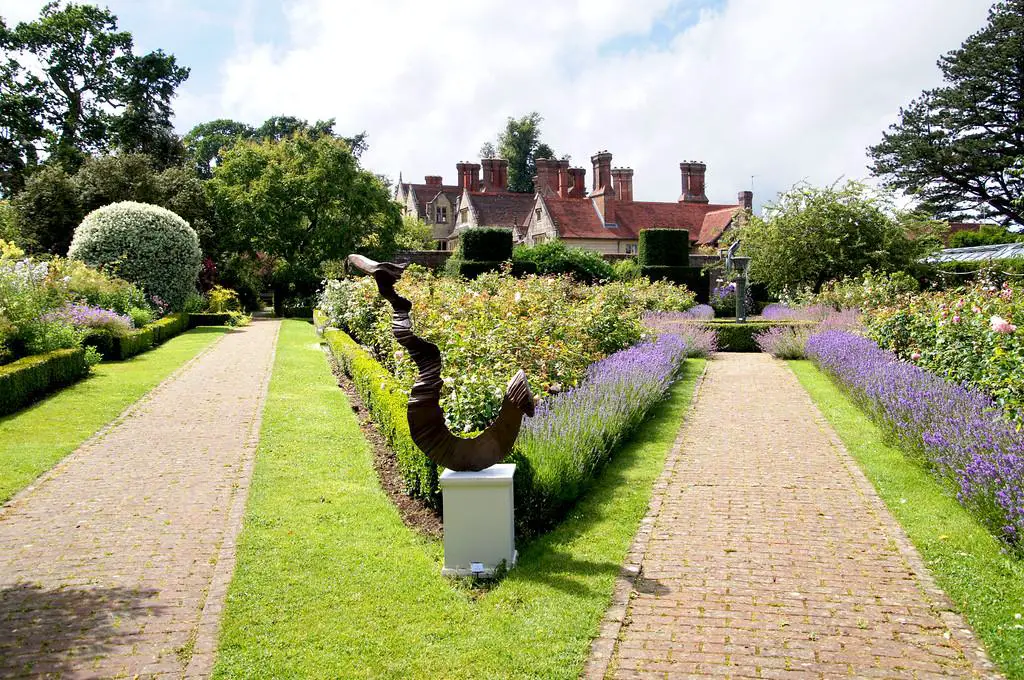
















































Very nice 🙂 Your photography is excellent, particularly of the close ups, and it looks like a very tranquil place to spend the day. If I ever find myself in the Sussex area I’ll be sure to check it out!
Thank you Joe. That is really kind of you to say. Yes do check it out if you’re ever in the area
Not a bad price to experience something like this – and to your point, I can totally see how this would appeal to people of many different interests. It’s hard to pick which is my favorite – the flowers or those cool sculptures! Both are so beautiful.
I think my favourite still remain the flowers 😛 But the sculptures were really beautiful and interesting too!
You have some really gorgeous photos!
Thank you so much Amber. Borde Hill was the perfect subject to practice my photography skills
How long did you spend at Borde Hill Gardens? The gardens remind me of something from the Secret Gardens book. It’s good that they have restaurants on site, that is very convenient.
We spent most of they day there. So it was definitely useful to have several options for lunch.
I know this post is about the garden, but I can’t stop looking at the building! I love architecture and your photos definitely showcase it well. This would be a great location for a photo session!
Yes the building was gorgeous. It’s just a shame you can visit the interior. But it’s a private home, so understandable.
Wow, I’m completely in love with the paradise walk and Italian Garden. Honestly, gardens in general were never really on my list, but I’ll put it on there right now. Love the feel of this place and I am a bit of bird nerd sometimes. Plus any place that has good cake is great in my book.
Yes, I would say that both of those are my favourite ones too. Although I also loved the rose garden. We didn’t actually see that many birds but I’m sure you would if you paid more attention than we did 😛
The building and statues are so beautiful!! I’m not personally a big fan of gardens, but I did enjoy the history of this one. Always a big history fan 🙂
Lots of history in this garden. You’re a bit like my boyfriend then. He mainly visits gardens for the history too
I’ve lived in West Sussex all my life (that’s over 50 years) and I’ve never heard of these gardens. They’re stunning and your photographs show them off beautifully. I remember well the storm of October 1987. You would not believe the number of trees that came down that night. I slept right through it and woke-up to devastation. Many roads were impassable and no one had any electricity.
Thank you so much for showing me Borde Hill Gardens – I will be looking them up very soon.
Wow. I thought they were quite well know. At least in the area. Do go if you get a chance.
I can’t even imagine what the storm was like. It was before my time and I think the worst one I experienced didn’t even come close. Although it did destroy big chunks of the forests around Paris